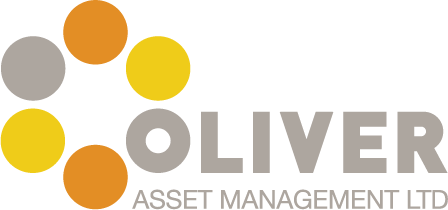It’s a well-worn phrase that I’m sure you’ve heard before.
The grandparents start the business, it becomes successful, the next generation build it further and the grandchildren subsequently ruin it and squander the wealth.
Of course it doesn’t happen this way every time. When we look at our typical client profile we see a great similarity – Families running businesses trying to build better lives for the future generations. And leave a lasting legacy.
We have developed what I guess market-teers would call a strap-line for our business that explains what we do – “We look after families, their businesses and their wealth across the generations”
By identifying this particular niche we can see that there are common financial planning requirements that come up frequently. That’s not to say that each situation is not unique but there are similarities in what each family is trying to achieve financially.
We find that we are often referred up and down the family generations and it really helps when there is family understanding and consensus when building the financial plan. Using our cash flow modelling process also provides a long term view of how wealth and indeed the value built up in the business can help families for a great number of years.
We can establish when it might be right to exit a business and extract wealth tax efficiently for the current generation while leaving a viable firm for the next generation.
We strongly believe that as family wealth financial planners we need to take a much longer view of our clients and consider 40 years, 50 years and even longer relationships.
Taking a cross-generational view also helps with our passively engineered investment approach by allowing capital markets to reward you for investing over the much longer term. You can let the beauty of compound returns achieve the family financial goals without exposing yourself to unnecessary risk.
In other words, if 5% pa or 6% pa return over the next 30 years gets you there, then don’t aim for 10% pa and find you are exposed to greater volatility and portfolio value swings than you’d like to be.
Being smart across generations with robust tax-planning can also provide greater wealth for the family and taxes such Inheritance Tax, can be mitigated or avoided altogether by taking the long term view.
Protecting the family and the business by using third-parties to shoulder the risk if something happening to the driving family member is vitally important and again something that should be known and understood by the family group. There is little point in creating wealth only to have is lost on the death or serious illness of one individual family member.
From a cost point of view, there are other benefits to this approach. There are often family discounts to be had by pooling assets on an investment platform – we do this through our Personal Investment Account and it can lead to substantially reduced costs that apply to all members of the family group over a long period of time.
I hear that slow-cooking is now become the natural antidote to fast-food and perhaps it’s time to apply this approach to your financial planning – easy does it, take long term considered views and we might just get beyond three generations.
Please speak to us if you have any concerns that your current financial arrangements are quite what you’d hope they’d be.
Roland Oliver
October 2013
Guest Blog: The Mindful Way of Doing Business
Introduction
 This week we are delighted to post an inspirational guest blog by Martin Stepek – award winning and critically acclaimed poet and writer and current CEO of the Scottish Family Business Association.
This week we are delighted to post an inspirational guest blog by Martin Stepek – award winning and critically acclaimed poet and writer and current CEO of the Scottish Family Business Association.
www.martinstepek.com
www.twitter.com/martinstepek
The Mindful Way of Doing Business
So what does a contemplative practice developed 2500 years ago by the Buddha have to do with your business? Surprisingly a lot actually, and even more importantly, in some of the key areas of your working – and personal – life.
 Mindfulness is the technique of trying to catch each moment in its entirety, without the usual inner commentary or opinion we all tend to have. So it could be just reading an email calmly and carefully, without prejudging its overall contents because of a) who the sender is, or b) our opinion halfway through the message. Or it might be becoming aware of tiredness or irritation inside our mind during an important meeting (and let’s face it if it’s not an important meeting why are you having one?)
Mindfulness is the technique of trying to catch each moment in its entirety, without the usual inner commentary or opinion we all tend to have. So it could be just reading an email calmly and carefully, without prejudging its overall contents because of a) who the sender is, or b) our opinion halfway through the message. Or it might be becoming aware of tiredness or irritation inside our mind during an important meeting (and let’s face it if it’s not an important meeting why are you having one?)
Mindfulness also refers to the more formal practice of sitting, eyes closed but alert, and focusing clearly but lightly on the breath or on a particular thought or emotion.
We can practice mindfulness literally anywhere or while doing any activity. It’s the ultimate portable gadget. I do it while waiting for a train, while doing the ironing or the washing up, even when I first wake up before I’m out of bed.
But why should you be doing it? And believe me you should!
Mindfulness helps us in two ways; one the prevention of negative stuff, the other the cultivation of positive stuff. I use stuff deliberately as there’s a whole range of things that mindfulness concerns and affects.
Let’s look at the negatives. I don’t know anyone in business who isn’t sometimes affected by stress, 24/7 work, tiredness, frustration, niggles, irritation or anger, down to the really serious stuff of chronic anxiety, clinical depression or a sense that the work you do is shallow, unfulfilling, meaningless… and that somehow you’re missing out on the important things in life. Mindfulness deals with all this… yes it’s “stuff” isn’t it? I’ll show evidence in a moment but let’s look at the positives now.
Mindfulness develops our sense of calm focus, clarity of thinking, creativity and compassion. It enables us to remain clear-minded under pressure, make decisions more wisely, and get home at the end of the day still capable of having a true relationship. How practical is this in running a business, in living a full life? I’d argue that apart from cash flow this good “stuff” is the most important set of features a business must have to succeed.
And the evidence? There are now over 2500 scientific journal articles on these effects, from the world’s leading universities; Oxford (has a mindfulness centre), Harvard, Yale, UCLA. Glasgow University has done ground-breaking research on mindfulness, and Aberdeen University offers an MSc. The internet is awash with papers, books, podcasts, interviews and lectures. Check them out.
I’ve been practicing since 1998, teaching it since 2004, to businesses, charities, social enterprises, schools, even Shotts Prison. I teach a free drop-in class on Tuesday evenings at 6.30-7.30pm at the University of West of Scotland in my home town of Hamilton. Mindfulness has helped me lead a national business support organisation, publish an award-winning reflection on my father as a Soviet labour camp victim, and much more beside, while still hopefully being a happy, contented and loving father, husband and friend.
As I said, you really should try it!
Automatic Enrolment
In more recent months the trend in our new enquiries has been from small to medium business owners who are not only picking up on the need for business protection but are also now looking into alternative savings for the business liquid assets AND the requirement to provide a company pension scheme under the up and coming automatic enrolment.
If you follow our blogs you will know we’re no strangers to business protection in fact we feel quite passionate about it and more recently we have posted commentary on the structured deposit accounts as an alternative for business cash holdings. We will no doubt continue to revisit these topics with regularity but for this week auto enrolment is the focus.
Although most employers won’t have their staging date until 2015/16, there’s a lot to do to plan and prepare for automatic enrolment. For example, employers will need to consider the cost implications and make sure the right systems and processes are in place to meet the new employer duties. On average, this could take up to two years so it is important employers start to prepare early and as I would say there is no time like the present.
Scottish Life* estimate there will be around 9 stages to the whole process starting off with Employers reviewing their current pension scheme and comparing it to the new requirements to identify any changes needed. If they don’t have a pension scheme, they’ll need to set one up.
Then it will be on to assessing the workforce to determine which types of worker they employ and the duties they have for each type of employee. Following this it will be time to consider the different scheme options available and how these will impact on the employer’s business and workforce.
When the right solution is designed there will need to be agreement on what this solution means for the business and one crucial factor will be ensuring the employer has the right balance between costs and administration of whatever scheme is to be put in place.
With the right scheme design ready and approved it will be important to then review internal processes, that is payroll and HR, as the employer will need to ensure they comply with the new requirements and can work to help keep the scheme compliant.
Depending on the nature of the business Unions may be involved and they will have to be consulted to ensure there is full agreement on the basis of the scheme or contracts of employment.
With all of these considerations covered it will then be time to implement the changes agreed and to ensure the scheme can run smoothly day to day, the workforce is engaged and provided with the right information at the right time.
The final stage will be to run the scheme and ensure the employers continue to meet their duties on an ongoing basis to remain compliant at all times.
It does seem like a lot of work and a long process but it doesn’t have to be daunting and we are already helping firms to make the first steps into the process so they are in a position to make the right decision for their company in good time without a deadline looming over them.
If you are interested in finding out more and would like to discuss the detail of how this could work for you we would be delighted if you got in touch, no time like the present to take a step in the right direction.
We look forward to your call.
Dr Claire Armstrong
*Scottish Life online resources published June 2012 (37W1107)
Structured Deposit Accounts
When I was recently asked to look at the Zurich Jade deposit account, I immediately rejected it out of hand as a “Structured Product.”
But we have spent a great deal of time understanding what the product is, what it can do, where the risks lie and whether it was something we would feel comfortable recommending to clients in the right circumstances.
I’m grateful to Tony Davies and Ian Black of Zurich for taking time to go through the product in detail and make us comfortable with it.
In essence, it’s a deposit account, held in real cash with an interest rate linked to a basket of stocks. If all the individual shares are up in any way a year after the strike date, you receive the full declared coupon (currently 6% or 8%, depending on term) and if some are up and some are down, a calculation is done to lower the rate.
The minimum return you could receive in a year is 0% – thus you will definitely receive at least the whole of your capital back at the end of the term, 3 or 4 & 1/2 years.
Given the current low rates of interest, using a portion of your longer term capital to try and improve returns makes sense. In particular, companies sitting with large cash deposits should consider this carefully.
I also like Zurich’s approach to protecting the risks associated with the derivatives involved by insisting that the issuer deposit cash with Zurich equivalent to level of exposure!
Belt and braces from the cautious Swiss.
It’s not for everyone as the starting point for access to it is £100,000 and if you can commit £1m, then you can create your own bespoke account.
In summary, if you want a bank account that could pay you substantially more interest than you currently receive and are prepared to tie up your capital for a period of time and are comfortable with the low risk and capital back guarantee, then contact us today for an application pack and more information.
Roland Oliver
National Employment Savings Trust (NEST) – implications for small businesses
Talking with an accountant this week reminded me that the proposed NEST pension reforms had not really filtered through or even hit the radar in some cases yet.
Small businesses owners can be forgiven in the current economic climate for having other things on their collective minds, but a start to understanding what NEST might mean for their businesses should be addressed sooner rather than later.
I’ve laid out the absolute basic details of the NEST proposals and would encourage you or your employer to give me a call to discuss the implications for your own businesses.
• The UK Government has agreed that all UK businesses, regardless of size, should offer a company pension scheme or enrol their staff into the new National Employment Savings Trust (NEST).
• From October 2012 UK employers will be required to automatically enrol employees into a ‘qualifying workplace pension scheme’. This auto enrolment could be to your existing company pension scheme if it meets certain criteria. If it does not meet the criteria or if you do not operate a company pension scheme then your employees will be enrolled into NEST, a low-cost pension scheme being introduced by the Government.
• Staff who are aged 22 or more and currently earning more than £7,475 a year will qualify.
• NEST is due to start in October 2012, with the largest employers joining first and the smallest joining by September 2016. Contributions from staff and employers will also be phased in. Until October 2016, the minimum overall level of contributions will be just 2%, with 1% coming from employers. From October 2016 to September 2017, total contributions will be 5% with 2% coming from employers. And from October 2017, the total minimum contribution level will be 8%, with employers contributing at least 3%.
• As well as the phasing in of compulsory contributions, legislation designed to minimise the burden on employers includes simple qualifying criteria for existing pension schemes and a simple compliance regime for new employer duties such as automatic enrolment.
Please find a more detailed factsheet here.
Roland Oliver
